ESKOM does not expect to have to load shed for the rest of the summer, autumn and winter despite continuing with its rigorous maintenance programme, CEO Brian Molefe said in Parliament on Wednesday.
“We will avoid load shedding at all costs but we are not out of the woods yet,” he said in a briefing to the public enterprises committee. There have been 217 days without load shedding to date.
Mr Molefe’s optimism about load shedding contrasts with his statement after the decision last week by the National Energy Regulator of SA (Nersa) to grant Eskom only a 9.4% tariff increase — R11bn less than it applied for.
At the time Mr Molefe said Nersa’s decision meant Eskom might have to load shed.
Addressing MPs, Mr Molefe said that on reflection Eskom management had decided contingency plans could address the hole that the Nersa decision had left in Eskom’s budget.
The implication of the Nersa decision was that it would not recognise Eskom’s use of diesel for its open cycle gas turbines when there was a lack of plant availability.
He said Eskom had been successful in reducing the use of diesel and to the extent that its use was necessary, it would deal with the financial implications. “We are confident that we will be able to survive without load shedding and without Eskom going bankrupt,’’ he said.
Diesel usage had reduced from R854m in October last year to R40m in February, Mr Molefe said.
Eskom group executive for generation Matshela Koko said Eskom planned to reduce the usage of the costly open cycle gas turbines, which run on diesel and have added significantly to operational costs over the past few years. The open cycle gas turbine usage declined 80% between October 2015 and January 2016, and spending on it was R360m less than forecast in February.
Eskom chief financial officer Anoj Singh told MPs the utility had already secured R85bn of the R324bn required for its build programme over the next five years. The R85bn for 2016 and 2017 was 95%-100% signed and committed, with R20bn coming from domestic private placements, R23bn from government equity, R6.2bn from swap restructuring, R23.8bn from development finance institutions and R11.8bn from export credit agencies.
Mr Koko reported on the significant achievements made by Eskom in its maintenance programme without having to load shed. Plant availability increased by an “impressive” 7% between October and February this year, compared with the 5% decrease in the same period the previous year.
Planned maintenance had improved from 9.3% in December 2014 to 13.5% in December 2015. Unplanned breakdowns decreased by an average of 10% from November 2015 to February 2016 compared with the previous year.
“The reduction in unplanned breakdowns contributed to improvements in availability whilst reducing open cycle gas usage,” Mr Koko said. He said the plan was to limit open cycle gas turbine usage to a maximum load factor of 6%.
Major and significant incidents dropped from 36 in 2013 to 10 in 2015.
Eskom continues to be burdened with unpaid debts by municipalities, R4bn of which are older than 90 days, R778m of which are between 61 and 90 days old, R820m between 31 and 60 days old, and R423m between 15 and 30 days old.
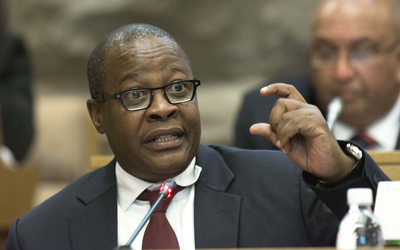
Brian Molefe. Picture: TREVOR SAMSON
ESKOM does not expect to have to load shed for the rest of the summer, autumn and winter despite continuing with its rigorous maintenance programme, CEO Brian Molefe said in Parliament on Wednesday.
“We will avoid load shedding at all costs but we are not out of the woods yet,” he said in a briefing to the public enterprises committee. There have been 217 days without load shedding to date.
Mr Molefe’s optimism about load shedding contrasts with his statement after the decision last week by the National Energy Regulator of SA (Nersa) to grant Eskom only a 9.4% tariff increase — R11bn less than it applied for.
At the time Mr Molefe said Nersa’s decision meant Eskom might have to load shed.
Addressing MPs, Mr Molefe said that on reflection Eskom management had decided contingency plans could address the hole that the Nersa decision had left in Eskom’s budget.
The implication of the Nersa decision was that it would not recognise Eskom’s use of diesel for its open cycle gas turbines when there was a lack of plant availability.
He said Eskom had been successful in reducing the use of diesel and to the extent that its use was necessary, it would deal with the financial implications. “We are confident that we will be able to survive without load shedding and without Eskom going bankrupt,’’ he said.
Diesel usage had reduced from R854m in October last year to R40m in February, Mr Molefe said.
Eskom group executive for generation Matshela Koko said Eskom planned to reduce the usage of the costly open cycle gas turbines, which run on diesel and have added significantly to operational costs over the past few years. The open cycle gas turbine usage declined 80% between October 2015 and January 2016, and spending on it was R360m less than forecast in February.
Eskom chief financial officer Anoj Singh told MPs the utility had already secured R85bn of the R324bn required for its build programme over the next five years. The R85bn for 2016 and 2017 was 95%-100% signed and committed, with R20bn coming from domestic private placements, R23bn from government equity, R6.2bn from swap restructuring, R23.8bn from development finance institutions and R11.8bn from export credit agencies.
Mr Koko reported on the significant achievements made by Eskom in its maintenance programme without having to load shed. Plant availability increased by an “impressive” 7% between October and February this year, compared with the 5% decrease in the same period the previous year.
Planned maintenance had improved from 9.3% in December 2014 to 13.5% in December 2015. Unplanned breakdowns decreased by an average of 10% from November 2015 to February 2016 compared with the previous year.
“The reduction in unplanned breakdowns contributed to improvements in availability whilst reducing open cycle gas usage,” Mr Koko said. He said the plan was to limit open cycle gas turbine usage to a maximum load factor of 6%.
Major and significant incidents dropped from 36 in 2013 to 10 in 2015.
Eskom continues to be burdened with unpaid debts by municipalities, R4bn of which are older than 90 days, R778m of which are between 61 and 90 days old, R820m between 31 and 60 days old, and R423m between 15 and 30 days old.


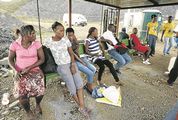
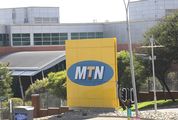

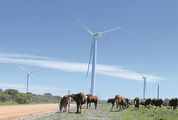


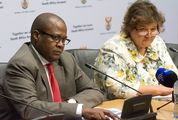
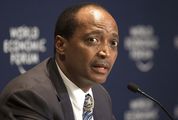











Change: -0.36%
Change: -0.46%
Change: -1.05%
Change: -0.06%
Change: -1.17%
Data supplied by Profile Data
Change: 1.38%
Change: -0.03%
Change: -0.36%
Change: 0.00%
Change: 0.02%
Data supplied by Profile Data
Change: -1.61%
Change: -1.50%
Change: -2.28%
Change: -2.07%
Change: -0.80%
Data supplied by Profile Data
Change: -0.59%
Change: -0.31%
Change: -0.26%
Change: 0.00%
Change: 1.64%
Data supplied by Profile Data